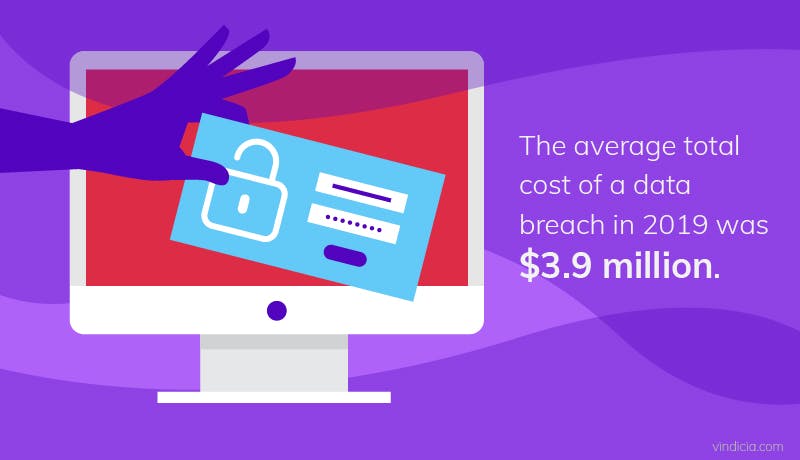Blog
December 18, 2019 | Authored by: Vindicia Team
5 billing considerations for scaling your subscription business
The subscription business model offers companies a fast track to growth, offering just about anything from entertainment streaming services to renters’ insurance. Yet to harness that growth potential, businesses need a subscription-centric billing solution that can keep up with their vision, market demands, and innovation in products and services.
However, a robust, subscription-oriented billing solution is not always top of mind when launching a subscription business — when the onus is simply on getting off the ground and establishing the business. At a certain point, however, an upgrade from a legacy billing approach to a more capable billing platform is necessary to handle the volume and complexity of recurring revenue operations, as well as facilitate growth at scale.
The longer the decision to upgrade is put off, the more costs the business will likely incur. The Shakespearean question that every business leader must answer is: "to build or to buy?" Or more accurately, should your company continue pouring IT budget into your limited billing system, or migrate to a mature, software-as-a-solution (SaaS) third-party subscription management and billing platform?
#1. Feature set
One hit product or service can make a subscription company — but lack of innovation can break it. Markets and consumer preferences move fast these days, and subscription-based companies need to constantly introduce new products or promotions while continuously refining old ones. At a practical level, businesses must be equipped with go-to-market tools that enable them to seamlessly push these options to consumers and generate revenue.
Your billing solution plays a critical role in going to market. Specifically, the feature set it offers in dynamic billing is of high importance to capitalizing on opportunities. Can your current platform run multiple experimental coupons? Bill faultlessly at high volume? Manage loyalty programs? Recover failed payments? Every new product or deal needs to have functional billing support along the entire subscriber lifecycle.
A robust feature set can drive high performance in customer acquisition and retention. But in the context of upgrading your solution, there are limitations to consider if going the build route. The more features you include, the more costly and timely the building project becomes. While you may not need support for foreign currencies now, you eventually will if global expansion is in the plans. Alternatively, deploying a professional SaaS-based solution will deliver an expansive feature set ready to go on Day 1.
#2. Cost
The capital and operating costs of the solution cannot be ignored as an influential factor in the decision-making process. A homegrown platform will entail committing sizable resources of labor, time, and money for hardware, software licenses, services and support, electricity, servers, real estate, and ad-hoc needs. Budgeting for such projects can be particularly challenging given the IT infrastructure demands, which by nature often run into costly delays. A SaaS subscription billing option can be more easily budgeted for, as you pay predetermined, regularly scheduled charges.
The total cost of ownership does not end with the homegrown build phase, however. Maintenance is an ongoing expense for proprietary platforms, and every update, fix or security patch will require an additional influx of capital. Such responsibilities for a SaaS product lie with the vendor.
#3. Business agility
A business can go from zero to hero overnight. Witness the rise of multiple tech unicorns that arrived on the scene and wasted little time maturing into multi-billion, global forces. The modern business is one that is built on principles of agility and responsiveness. Your billing platform has to exemplify those ideals by allowing your business to be responsive to market conditions and consumer demands.
The turnaround from concept to tangible asset needs to be as streamlined as possible. How rapidly can you iterate and bill for new offers? How long would it take to add support for mobile payment options? Can new promotions be generated on social trends? The answer to these questions will inform how agile your business truly is.
Forward progression can be halted or hindered by a homegrown solution that can't keep pace with growth at scale. Businesses that need that extra gear will then have to research their options for plugging more money into the solution or writing off the platform and turning to a SaaS solution.
#4. Experience
As companies rapidly adopt the subscription business model, it's worth noting that subscriber management is both an art and a science. The experience of subscription industry veterans who've been there before and possess strategic insights are invaluable. This is particularly relevant in subscription billing, which is a total departure from the traditional one-time purchase. Planning for and managing recurring revenue calls into action different skills and knowledge. For instance, how many retries should be devoted to a payment that has failed because of wrong card information? And attempted at what intervals?
Navigating the payments ecosystem is not an easy affair when building a solution from the ground up. For example, negotiating contracts with payment processors can be an onerous exercise. The SaaS option, however, gives users access to rich insights drawn from millions of transactions in a fraction of the time they would be able to accrue such experience through their own means. Aside from the platform being a functional tool, it can also be a valuable resource for growing companies that would otherwise have to acquire that knowledge externally.
At scale, the right solution can help effortlessly deploy best practices and help generate deeper insight to optimize operations. Data collection and analysis are crucial here. Businesses need a platform that can deliver deep reporting on variables like payment failures and payment method choice.
#5. Risk
When it comes to the storage and use of customers' private payment information, there are complex regulations and industry standards that must be met. The aforementioned experience that a SaaS solution brings is of clear advantage in compliance.
PCI-DSS is one of the noteworthy industry-standard, necessary for working with credit card providers. The more involved you are with payment information, the more responsibility and liability you are assuming. Multiple security measures have to be in place if you store customer details, and any breach could result in litigation: The average total cost of a data breach in 2019 was $3.9 million, including revenue and reputational losses. There's also GDPR, CCPA, and other global and regional regulations to consider.
Without ample internal resources of staff and legal expertise at your disposal, the task of compliance at scale can be challenging at best, and harmful at worst. Oversight lapses can lead to penalties, fines, and lost trust. But mitigating those risks and their costs can be achieved simply through purchasing a SaaS solution.

Talk to Vindicia today
Getting that all-in-one platform that can satisfy all these billing considerations cost-effectively doesn't have to be a pipe dream. With Vindicia Subscribe (formerly CashBox), recurring revenue businesses can access robust features, functionality, and expertise to drive performance in customer acquisition and retention. Contact Vindicia today for more information on our subscription billing solutions. And for further analysis of the build vs. buy question, read our white paper “Is your subscription billing system restraining your business growth?"
About Author

Vindicia Team
We value our subject matter experts and the insights each of them brings to the table. We want to encourage more thought leaders to come together and share their industry knowledge through our blog. Think you have something interesting to contribute as a guest blogger? Contact us at info@vindicia.com